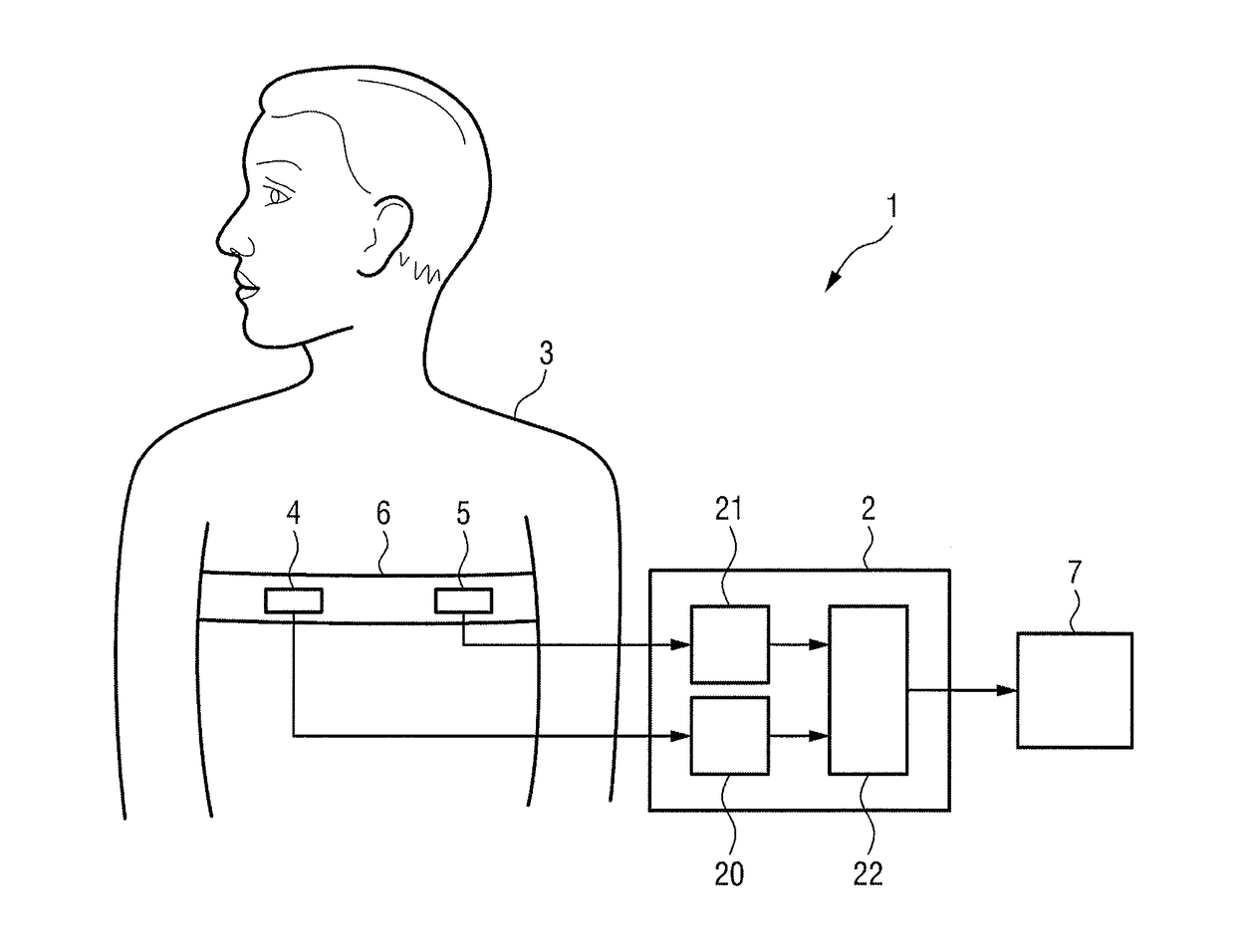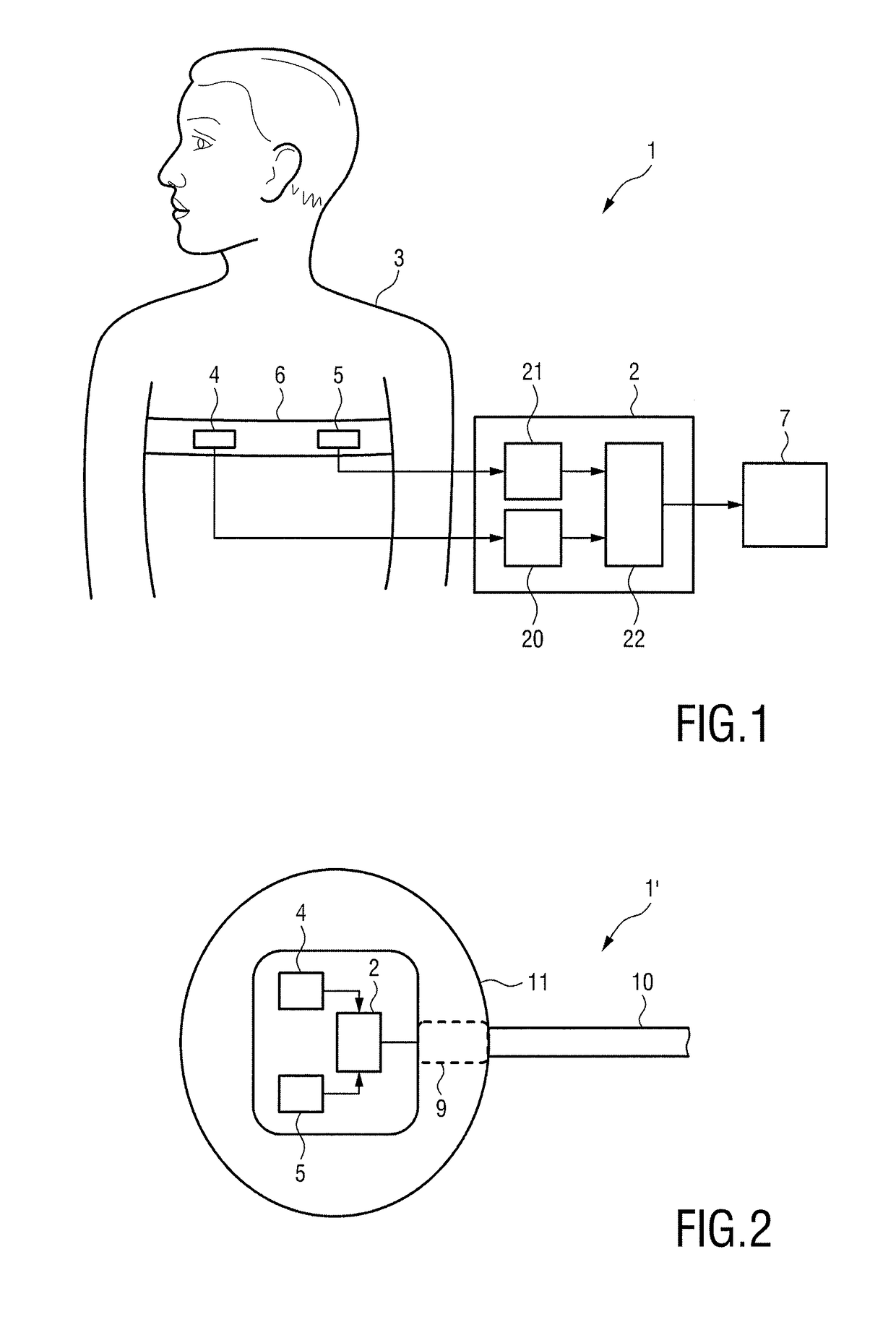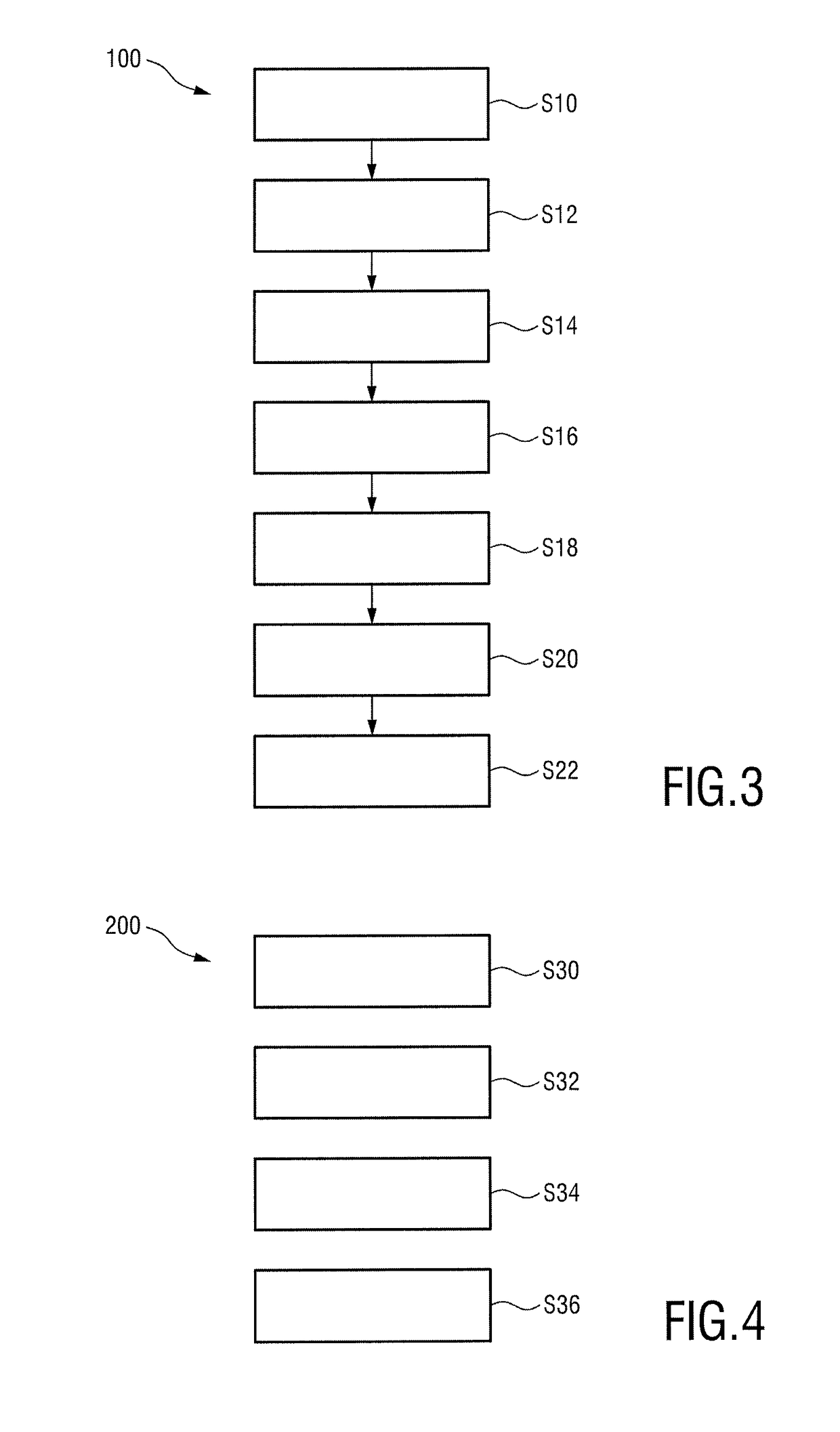Device, system and method for detecting a cardiac and/or respiratory disease of a subject
a technology for respiratory diseases and devices, applied in medical science, diagnostics, auscultation instruments, etc., can solve the problems of limited specificity and elevated breathing rate, and achieve the effect of improving the accuracy of spot measurement and improving the detection of cardiac and/or respiratory diseases
- Summary
- Abstract
- Description
- Claims
- Application Information
AI Technical Summary
Benefits of technology
Problems solved by technology
Method used
Image
Examples
first embodiment
[0060]FIG. 1 shows a schematic diagram of a system 1 and a device 2 according to the present invention for detecting a cardiac and / or respiratory disease of a subject 3. The system 1 comprises a sound sensor 4 for sensing sounds generated by the subject's body and generating a sound signal representing the sensed sounds. The sound sensor 4 may e.g. be a microphone that is acoustically coupled to the subject's body, e.g. the subject's chest. The system 1 further comprises a motion sensor 5 for sensing motions generated by the subject's body and generating a motion signal representing the sensed motions. The motion sensor 5 may e.g. be an accelerometer that is mechanically coupled to the subject's body, e.g. the subject's chest or belly area.
[0061]For coupling the sound sensor 4 and the motion sensor 5 to the respective portion of the subject's body the system 1 comprises coupling means 6. Said coupling means 6 may be a belt that holds the sensors 4, 5, or a self-adhesive pad that hol...
second embodiment
[0066]FIG. 2 shows a schematic diagram of a system 1′ according to the present invention. In this embodiment the system 1′ comprises a package 8 that may be attached to the chest or back of the subject. The package 8 may include the sensors 4, 5 and the device 2. Hence, the sensed signals are directly processed in the package 8. Additionally, an interface 9 may be provided for outputting the sensed signals and / or the result of the detection performed by the device 2 via a cable 10 (or, alternatively, via a wireless connection). The package 8 is preferably mounted on a pad 11, which may have an adhesive layer on the bottom side so that it can be adhered to the subject's skin.
[0067]The combination of motion and sound signals is preferably acquired simultaneously and may be used to diagnose and / or monitor cardiac or respiratory disease (e.g. heart failure or pneumonia) by integrative interpretation of abnormalities in the heart and breathing rates (i.e. too high or too low) and sounds ...
PUM
 Login to View More
Login to View More Abstract
Description
Claims
Application Information
 Login to View More
Login to View More - R&D
- Intellectual Property
- Life Sciences
- Materials
- Tech Scout
- Unparalleled Data Quality
- Higher Quality Content
- 60% Fewer Hallucinations
Browse by: Latest US Patents, China's latest patents, Technical Efficacy Thesaurus, Application Domain, Technology Topic, Popular Technical Reports.
© 2025 PatSnap. All rights reserved.Legal|Privacy policy|Modern Slavery Act Transparency Statement|Sitemap|About US| Contact US: help@patsnap.com



